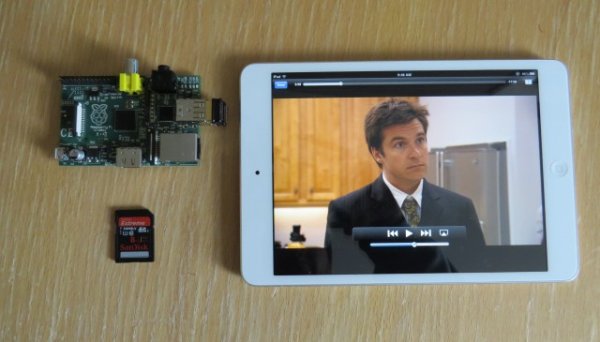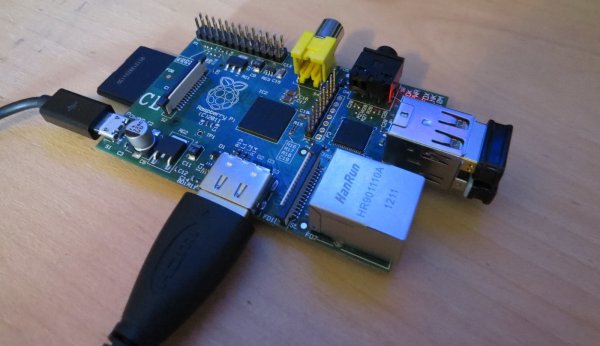There are so many incredible things you can do with a Raspberry Pi. You could build a robot. Invent a new kind of musical instrument. Or send the tiny computer nearly into outer space on a picture-taking balloon adventure.
Sadly, I have no idea how to do any of those things. But I bought a couple of Raspberry Pis, and it would have felt wasteful not to at least do something useful with them.
The obvious choice was home media streaming. The first floor of my place has all the consumer electronics and home networking a tech journalist could ask for, but my second floor was pretty bare. Enter the Raspberry Pi (and a 7-year-old TV that had been gathering dust in a corner as a result of being replaced a year ago).
The best part is I didn't have to do anything other than follow instructions. All the heavy lifting was taken care of by the creator of Raspbmc (a 19-year-old student, believe it or not), and the developers of XBMC, the popular home media software on which it's based. XBMC developers reverse-engineered the AirPlay protocol to let it work on non-Apple devices.
Raspbmc isn't perfect—there are short delays between issuing a command from my iPad (pressing play, pause, skip, etc.) and hearing the results on the Pi-enabled TV. Considering the low cost and coolness factor, though, it was a fun project worth doing.
Getting started
What I used:
- Raspberry Pi, 256MB model
- SanDisk 8GB Class 10 SD card (Raspbmc recommends at least a Class 6 speed card, and Class 10 for optimal performance).
- USB Wi-Fi adapter
- 5v power adapter (borrowed from a Barnes & Noble Nook e-reader—the Pi does not come with its own power supply)
- HDMI cable
- Bluetooth keyboard with trackpad
If you want to take on this rather easy project, the first step is heading to the Raspbmc downloads page and grabbing the network image. You'll load this onto an SD card on a Windows, Mac, or Linux computer.
Windows installation is performed by a setup program, while Mac and Linux users should open the terminal and enter a couple of simple commands:
Before installing the Raspbmc network image to the SD card, make sure you're not installing to the wrong disk, since you could lose data. There will be an option to configure wireless networking, but it's not necessary if you have an Ethernet cable.
After installing the network image, stick the SD card into the Pi and hook it up to a TV or whatever device you're using. The Pi has no on/off switch, so you turn it on simply by plugging in a micro-USB power supply.
As long as you're connected to the Internet, the Pi will now install the latest version of Raspbmc. If you didn't configure Wi-Fi in advance, this will only be possible with a wired connection. If you lack an Internet connection for the initial setup, you can get the standalone Raspbmc image instead of the network image from the downloads page.
During installation, you'll see messages like “Connection to Raspbmc update server successful,” “Formatting partitions,” “Downloading kernel modules,” and “Downloading root file system—grab a coffee!” The installer will inform you to wait 15 to 25 minutes for it to do its thing and then reboot into Raspbmc. Mine took 22 minutes.
Once Raspbmc is installed, Wi-Fi can more easily be configured. After completing the installation on my living room TV, where I had an Ethernet connection, I brought the Pi upstairs to my bedroom, where Wi-Fi is my only option. With a cheap USB wireless adapter plugged in, I navigated to Programs/Raspbmc settings/Network Configuration, selected “wireless” and typed in my network name and password to connect.
Getting AirPlay working was as simple as heading toward System/Settings/Services/AirPlay and checking “Allow XBMC to receive AirPlay content.” Once that was done, my iPad began showing “XBMC (raspbmc)” as an AirPlay target from the music and video apps. This will work from any iOS device or from iTunes on a computer:
For more detail: AirPlaying music and video from iPad to Raspberry Pi—it’s as easy as…

